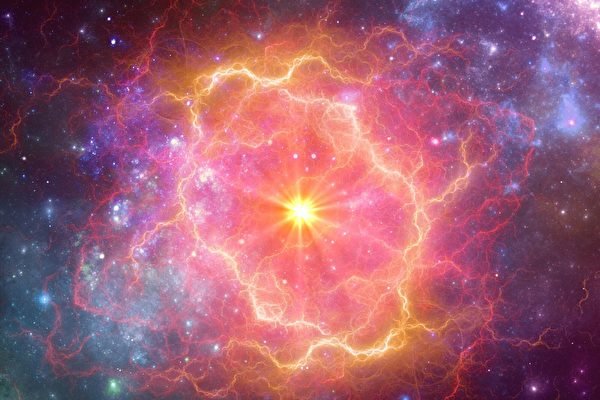Scientists have captured a close-up photo of a star for the first time: this star, surrounded by gas and dust, appears to be in its death throes, on the verge of being destroyed in a massive supernova explosion.
According to a report by Reuters, researchers say the most astonishing aspect of this discovery is that the observed star is not in our Milky Way galaxy, but in a neighboring galaxy called the Large Magellanic Cloud.
This is the first detailed image of a mature star from an external galaxy, although a study published last year already observed a newborn star in the Large Magellanic Cloud. “Close-up” means the image captures the star and its surrounding environment.
The dying star, named WOH G64, is about 160,000 light-years away from Earth. A light-year is the distance light travels in one year, approximately 5.9 trillion miles (9.5 trillion kilometers).
The image, somewhat blurry, was obtained using the Very Large Telescope Interferometer located in Chile. It reveals the star enveloped in a glowing, apparently self-expelled egg-shaped cocoon of gas and dust (referred to as a nebula). Beyond the cocoon, a faint elliptical ring can be seen, possibly composed of more dust.
Astronomer Keiichi Ohnaka from Andrés Bello University in Chile stated, “This star is in the final stages of its life, facing its destruction.”
He is the lead author of the study published in the journal Astronomy & Astrophysics on Thursday, November 21.
“We see these shapes because the material is ejected more in some directions than in others. Otherwise, these structures would look spherical,” Ohnaka explained, suggesting another possible explanation for these shapes could be the gravitational influence of an undetected companion star.
According to astronomer Jacco van Loon from Keele University in the UK, a co-author of the research, before beginning to eject material, WOH G64 was a massive star known as a red supergiant, estimated to have a mass of about 25 to 40 times that of the Sun.
“Its estimated mass means it has been around for about 10 to 20 million years and will die soon,” van Loon stated. “This represents the first image of a star in this late-stage phase, potentially undergoing unprecedented changes in preparation for an explosion.”
“For the first time, we can see the structures enveloping a dying star,” van Loon said. “Even within our Milky Way, we do not have such an image.”
WOH G64 is enormous in diameter because it will expand before the expected explosion. If placed in the center of our solar system, it would extend all the way to Saturn’s orbit, Saturn being the sixth farthest planet from the Sun.
“We have observed noticeable changes in WOH G64’s appearance over the past decade,” stated Ohnaka, adding that the star has become dimmer, possibly due to its starlight being obscured by the gas and dust it emits.
“This offers us a rare opportunity to observe the life of a star in real-time, especially the final stages of heavy stars before a supernova explosion,” Ohnaka pointed out.
The Large Magellanic Cloud is a satellite galaxy of the Milky Way, with another galaxy nearby called the Small Magellanic Cloud. These two galaxies are smaller than our Milky Way galaxy and offer distinct galaxy environments.
For example, the Large Magellanic Cloud has less dust than the Milky Way and lower metal element content (elements other than hydrogen and helium). Van Loon mentioned that this characteristic “may affect the life and death processes of stars.”

